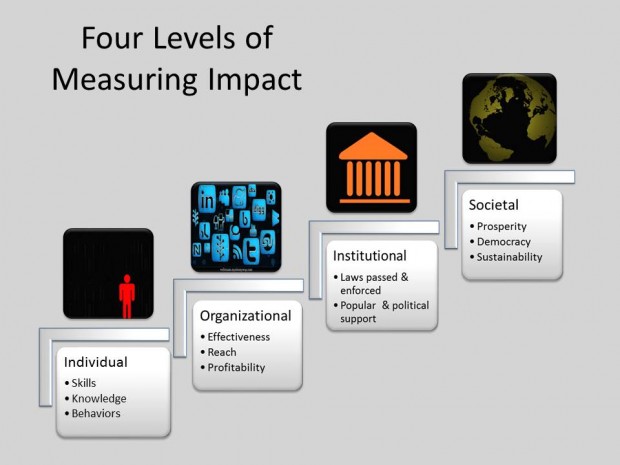When it comes to measuring success or failure, media developers face many of the same challenges as the rest of the international development community.
Do you measure inputs, such as the amount of money that is invested in media development initiatives? Or do you track outcomes from projects—the number of people trained or the knowledge that they gained from training? Should we be looking at organizational performance of media enterprises, such as the increase in audience or reach, or their profit and loss accounts? Or should we be looking at broader impacts on society in terms of poverty reduction, improved governance or overall peace and economic growth that an independent media can help to achieve?
One creative attempt at answering these questions is the just-released Impact Dashboard 2014 from the Media Development Investment Fund. This document is a must-read for media developers because of the clear and graphic way that MDIF has tracked the results of its work.
 MDIF is one of the most interesting and creative creatures of the media development field—an organization that makes loans and equity investments in, and offers technical support to promising media enterprises in developing countries. As such, it is already addressing one of the higher-level possible outcomes of media development, sustainable media enterprises. Compared with some of the early attempts at addressing problems in the media sector by simply training journalists, it is already yards ahead.
MDIF is one of the most interesting and creative creatures of the media development field—an organization that makes loans and equity investments in, and offers technical support to promising media enterprises in developing countries. As such, it is already addressing one of the higher-level possible outcomes of media development, sustainable media enterprises. Compared with some of the early attempts at addressing problems in the media sector by simply training journalists, it is already yards ahead.
MDIF is also ahead in the results game. It looks at change at several levels, and it attempts to address the fundamental question of why high quality, independent media matters to developing societies. MDIF’s results framework measures its outputs, in terms of loans, equity investments and technical assistance; it looks at client outputs in terms of quality reporting and content production; and it suggests results at the societal level in terms of impact on reducing corruption and improving accountability.
MDIF’s solution to the results question mirrors closely the similar work carried out under the auspices of the Learning Network on Capacity Development , which is a network of development practitioners that has contributed to the last three global accords on aid effectiveness. LenCD has worked to build a stronger understanding of capacity development as more than just outputs—not just training and technical assistance—but a broader set of activities and focus on higher level results. These results can be tracked and measured at multiple levels. I have summarized one way of looking at these levels of capacity development outcomes in the diagram below.
MDIF’s Impact Dashboard is an important reminder about the importance of articulating the results of media development work. As the international community gears up for a new set of international development goals to replace the Millennium Development Goals that expire next year, initiatives such as this one can help us make the case that media development can be measured, that money spent on media development is well used, and that high quality independent media really matters for developing societies.


Comments (0)